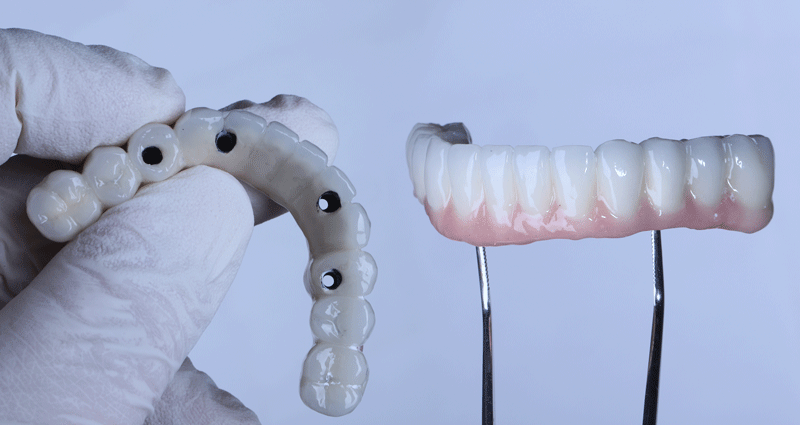Understanding Your Abutment on Implant: A Comprehensive Guide to Dental Implants Success

Dental implants have revolutionized restorative dentistry, offering a durable, natural-looking solution for individuals with missing or damaged teeth. These advanced restorations mimic the structure of natural teeth, restoring function and aesthetics while preventing bone loss in the jaw. A complete dental implant consists of three primary components: the implant screw, which integrates directly into the jawbone, the abutment, and the artificial tooth, commonly known as the crown. Understanding the function and importance of the abutment is essential to ensuring long-term success.
An abutment on implant acts as the crucial connector between the titanium implant and the final crown. After the implant has successfully fused with the jawbone through osseointegration, a skilled dental specialist places the abutment on top of the implant. This small but essential component protrudes slightly above the gum line, creating a secure foundation for the final crown placement. Properly selecting and positioning the abutment ensures a stable, long-lasting dental restoration that functions as naturally as possible.
How Abutments Influence Comfort, Function, and Longevity
The abutment plays a fundamental role in the overall performance and success of the implant-supported restoration. It provides critical support, securing the artificial tooth and allowing for proper chewing, speaking, and biting function. Without a well-placed abutment, the dental implant would lack stability, leading to potential discomfort, misalignment, or even failure over time. Ensuring the abutment is correctly positioned helps to maintain overall oral health and enhances the longevity of the implant.
A carefully selected abutment also contributes to aesthetics, ensuring that the final crown blends seamlessly with the surrounding natural teeth. Precision in abutment design and placement helps maintain a natural-looking gum line and prevents irritation or inflammation. Additionally, the abutment material—whether metal or ceramic—plays a significant role in comfort and visual appeal. Zirconia abutments, for example, offer superior aesthetics, making them ideal for highly visible front teeth restorations.
Choosing the Right Abutment: Custom vs. Stock Options
When selecting an abutment on implant, patients have options tailored to their individual needs. Custom abutments are designed to provide a precise fit, optimizing both aesthetics and function. These abutments are ideal for cases requiring meticulous attention to detail, such as front-tooth restorations where seamless integration is crucial. They are crafted using digital impressions, ensuring an exact fit that mimics natural gum contours and supports the surrounding teeth effectively.
Stock abutments, on the other hand, come in pre-fabricated sizes and shapes, making them a more cost-effective alternative. While they are commonly used for molars or less visible areas of the mouth, they may not provide the same level of precision as custom abutments. Material selection is another important factor—titanium abutments offer unmatched strength and durability, while zirconia abutments provide an aesthetic advantage by closely matching the natural tooth color. Consulting with a skilled dental provider ensures that the best abutment choice is made based on the patient’s specific needs and goals.
Factors Affecting Implant Success and Long-Term Stability
Several factors contribute to the success of a dental implant, including surgical precision, bone density, and post-operative care. A strong, healthy jawbone is essential for implant stability, as it provides the necessary foundation for long-term support. In cases where bone loss has occurred, bone grafting procedures may be required to enhance bone density before implant placement. Proper implant positioning also plays a vital role in ensuring the abutment and crown align correctly for a comfortable and functional bite.
After implant placement, diligent oral hygiene practices are essential for preventing complications such as peri-implantitis, an infection that can lead to bone loss and implant failure. Regular brushing, flossing, and professional dental cleanings help maintain gum health and prolong implant longevity. Patients should also follow their dentist’s guidelines for post-operative care, avoiding excessive pressure on the implant site during the healing period. Routine dental check-ups allow specialists to monitor implant stability and address any concerns early, ensuring optimal long-term results.
Partnering with a Skilled Dental Specialist for Optimal Results
The success of a dental implant largely depends on the expertise of the dental provider performing the procedure. Choosing a highly experienced specialist ensures that every step, from implant placement to abutment selection, is meticulously planned for the best possible outcome. Advanced imaging technology and digital impressions allow for precise treatment planning, minimizing risks and enhancing overall implant success.
At Ferber Dental Group, our team of dental implant experts prioritizes precision, patient education, and long-term care. We carefully evaluate each patient’s unique needs, customizing abutment selection and implant placement to optimize both function and aesthetics. With state-of-the-art technology and a commitment to excellence, we help patients achieve healthy, confident smiles that stand the test of time.
Schedule your consultation today with Dr. Brian Ferber and our exceptional team. Let us help you achieve the smile of your dreams! Call us now or visit our website to book an appointment.





